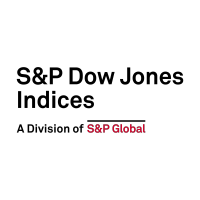Tag Archives: S&P Global BMI
S&P World Index: A Global Benchmark for Comprehensive Coverage
Introducing a benchmark that digs deeper into developed markets, with data that extends over several economic cycles. Discover how the S&P World Index sets the standard for developed market indices.
- Categories Equities
- Other Tags
2023 Market Review for Asian Investors
There are potential diversification benefits for Asian investors who incorporate U.S. equities to alleviate their tendency for a home country bias. Representing nearly 60% of the global equity market, as measured by the S&P Global BMI, U.S. equities provide a larger opportunity set outside of Asia, along with potential diversification due to different economic structures…
- Categories Equities
- Other Tags
Global Islamic Indices Gained over 7.5% in Q2 2023, Outperforming Conventional Benchmarks YTD
Global equities ended the second quarter of the year with a gain of 6.0%, as measured by the S&P Global BMI, accumulating gains of 13.4% YTD. Shariah-compliant benchmark returns, including the S&P Global BMI Shariah and Dow Jones Islamic Market (DJIM) World Index, outperformed their conventional counterparts by about 1.5% during the quarter, building on…
- Categories Equities
- Other Tags
Global Islamic Indices Gained over 10% in Q1 2023, Outperforming Conventional Benchmarks
Global equities ended the first quarter of the year with a gain of 6.9%, as measured by the S&P Global BMI. Meanwhile, Shariah-compliant benchmarks, including the S&P Global BMI Shariah and Dow Jones Islamic Market (DJIM) World Index, also increased during the quarter and outperformed their conventional counterparts by 3.5% and 3.4%, respectively. Overall, regional…
- Categories Equities
- Other Tags
Building a Passive Bridge across the Pond
At over 300 years old, the British government bond and stock markets are among the world’s oldest. They are also among the largest globally; ranked by float-adjusted market capitalization, the U.K. gilt market and U.K. stock market are the fourth and third biggest, respectively. The British investment industry has existed for centuries, with the country’s…
- Categories Equities
- Other Tags
Global Islamic Indices Declined Over 20% YTD, Underperforming Conventional Benchmarks in 2022
Global equities partially recovered from the losses accumulated throughout the year by increasing 9.9% during Q4, as measured by the S&P Global BMI, ending 2022 with a loss of 18.2%. Meanwhile, Shariah-compliant benchmarks, including the S&P Global BMI Shariah and Dow Jones Islamic Market (DJIM) World Index, also increased during the quarter, but they underperformed…
- Other Tags
Safe Harbors and Silver Linings
As we reflect on this year’s notable market themes, one trend is certain: it has been a tumultuous market characterized by rate hikes and inflation concerns across regions, with significant losses across asset classes. Crypto market performance added to jitters, with the S&P Cryptocurrency LargeCap Index down 66% YTD. Losses throughout the year culminated in…
- Categories Equities, Fixed Income, S&P 500 & DJIA
- Other Tags
- Categories
- Equities, Fixed Income, S&P 500 & DJIA
- Other Tags
An Index Approach to World Cup Success
Football fanatics across the globe are watching closely to see which of the 32 countries that qualified for the FIFA World Cup finals in Qatar will raise the trophy in glory. Every four years, the global spotlight scrutinizes each nation’s footballing prowess (or lack thereof). Beyond coaches, pundits and tacticians, the World Cup gives plenty…
- Categories Equities
- Other Tags
- Categories
- Equities
- Other Tags
Islamic Benchmarks Continued to Fall in Q3, in Line with Conventional Indices
Global equities dropped 6.6% in Q3 2022, as measured by the S&P Global BMI, accumulating a loss of 25.6% YTD. Meanwhile, Shariah compliant benchmarks, including the S&P Global BMI Shariah and Dow Jones Islamic Market (DJIM) World Index, managed to outperform their conventional counterparts by 0.6%. Overall, regional broad-based Shariah and conventional equity benchmarks accumulated…
Global Diversification Trending in India – Time to Notice?
The merit of international diversification seems to have proven itself lately in the context of the Indian market. Over the past year, interest has increased in adding global exposures to local investment portfolios. Global markets offer the potential opportunity to diversify beyond a traditional concentrated focus on local markets. The latest August Global Equity Dashboard…
- Other Tags
















































